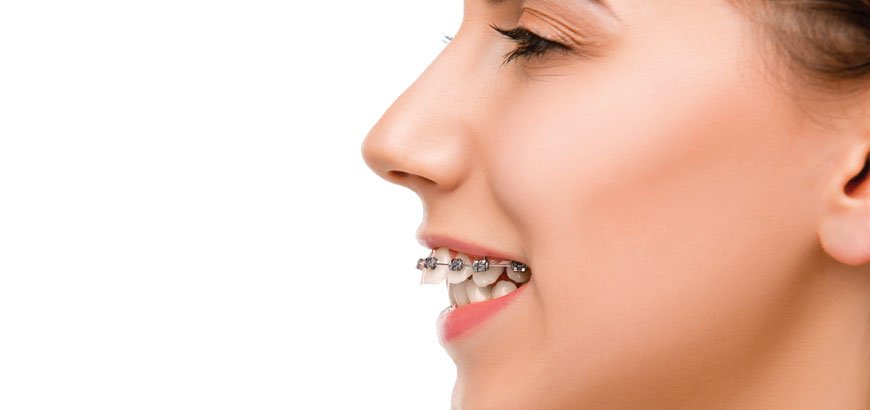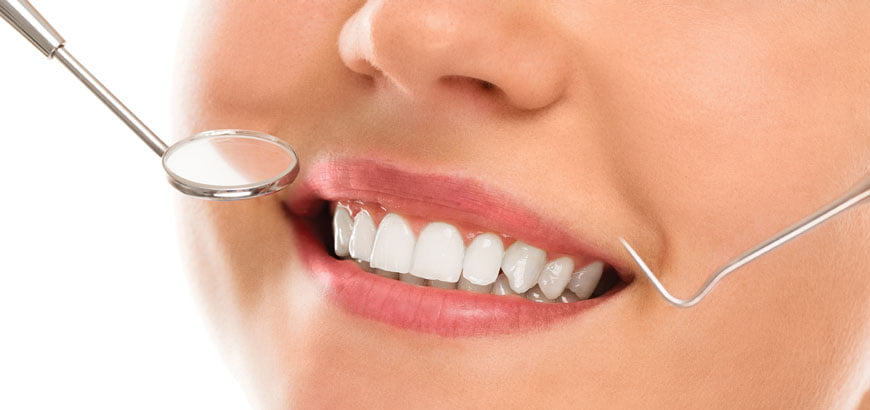Orthodontic Treatment

Orthodontics is the branch of science that examines the crookedness of the teeth, the relationship of the jaw bones with each other and the skull bones, and diagnoses the problems that occur due to these. Orthodontic treatment is known as the way of treating the disorders in this system.
Orthodontic Treatment – What is Braces Treatment?
The treatment used in the correction of crooked teeth and skeletal problems is called braces treatment or orthodontic treatment. Although it contains many different methods in itself, the first thing that comes to mind when it comes to braces treatment is the apparatus that is attached to the teeth and provides the movement of the teeth. Although braces are generally fixed, they consist of brackets that are attached to the teeth and parts that pass through the brackets and connect all the teeth.
During the treatment, the patients; Some foods and drinks should be avoided, especially hard foods such as apples, pears, chips, the hard side of bread and nuts. Sticky foods such as jelly beans, caramel chocolate, chewing gum, Turkish delight, and alcoholic and carbonated drinks can cause dental brackets to move. During braces treatment, patients are advised to choose soft, juicy and easily digestible foods. In this way, damage to the wires can be prevented. It is also considered an important point for people who use braces to protect their mouth areas against hard impacts that may come from the outside.
Is There an Age for Orthodontic Treatment?
Since there is no age limit in orthodontic treatment, it can be applied to people of all ages. However, the most appropriate period to start orthodontic treatment is considered to be adolescence between the ages of 9 and 14. In this process, which is a very rapid growth period, orthodontic disorders in children can be eliminated at the same speed.
How Long Does Orthodontic Treatment Take?
The duration of orthodontic treatment may vary according to the orthodontic problems in each patient. A patient wears braces for an average of 18 to 24 months, but braces treatments can usually continue for periods ranging from 8 to 30 months. The success of orthodontic treatments depends on the experience of the physician and the cooperation of the patient, and if these are provided, the success of the treatment is 100%. Correct diagnosis, correct decision and selection of correct mechanics play an important role in shortening the treatment period.
How Is Orthodontic Treatment Done?
Orthodontic treatment; It can be applied to patients with crooked teeth, congestion, gaps or jaw problems. It stands out as an aesthetic application that can be applied to patients of all ages who are uncomfortable with the appearance of their teeth. With the eruption of milk teeth, it can become a very important issue to regularly check the permanent teeth that begin to erupt and to treat the detected orthodontic problems. Within the scope of orthodontics; Treatment processes are carried out with metal and transparent wires, intraoral and extraoral appliances, plaques and surgical interventions. Braces treatment stages consist of initial examination, diagnosis, planning and preparation, bracket and wire selection, application and reinforcing orthodontics.

Various tests are applied to the patients who will undergo orthodontic treatment in their first examination. After a detailed oral examination by the dentist, the diagnosis is made by taking facial and dental photographs of the patient with cephalometric and panoramic radiographs. The patient is given detailed information about the necessary braces treatment, the braces to be used and the treatment methods are explained. In addition, the patient is enlightened about how long the treatment will take and what situations may be encountered. Since braces treatment is a process that requires a lot of effort and patience, the design of brackets and plaques is started with the decision of the patient. In order to create an accurate treatment plan, a personalized treatment plan is created by evaluating intraoral photographs and films.
After the treatment plan is determined, if the patient needs a filling, tooth extraction, implant treatment or dental scaling in order to regain the necessary oral health to start braces treatment, these stages are completed first. If there is gum disease, it should be eliminated as well. If these procedures are not performed, it is not possible for orthodontic treatment to be beneficial.
Bracket selection is made in accordance with the patient’s teeth and mouth structure. Since braces treatment is a long and laborious process, it is necessary to use wires and appliances that will provide the best results for the person’s teeth. When the braces are first put on, after a period of 3-4 days, the mouth and teeth get used to the braces. With the choice of the right braces, orthodontic treatment reaches results quickly.
After the braces and brackets are selected, an appliance called a retractor is attached to the edges of the patient’s lips, the mouth is widened and the operation begins. The retractor helps the doctor see the teeth in the anterior and posterior regions while the patient is braced. It is important that the teeth are dry when wearing braces, and after the teeth are acidified and dried, the brackets can be applied in two ways. These are known as traditional and bonding methods. For traditional orthodontic treatment, the brackets are placed on the teeth one by one with a special adhesive. After cleaning around the beam-cured brackets, a wire called arch wire is passed through the brackets. If necessary, the brackets can be fixed with the help of rubber.
In the bonding method, which has been used frequently in recent years, a tooth model is prepared according to the measurement taken from the patient’s mouth. Brackets are attached to this model. It is hardened after it is bonded by transferring it onto the teeth. In this method, the time spent by the patient in the doctor’s chair for braces is also reduced.
While braces treatment is a huge step for the proper positioning of the teeth, preserving the result of the treatment is also considered as an important issue. Reinforcement treatment is applied to prevent the teeth from returning to their original position after the active treatment is completed. It is ensured that the result obtained by using fixed or removable appliances for a while is preserved. Hawley is known as a removable appliance that is applied to three jaws. Essix has the feature of being an unnoticeable appliance as well as being attached and detachable. Fixed reinforcement appliances are usually adhered to the tongue-facing surfaces of the teeth in the lower anterior region. It is used to prevent the movement of the teeth after the braces are removed.
Orthodontic Treatment Prices
The degree of difficulty of orthodontic treatments depends on how crooked the person’s teeth are. Some disorders that patients consider minor are actually skeletal and take a long time to correct. For this reason, orthodontic treatment prices are determined on a patient-specific basis. Braces treatment prices may vary depending on some factors such as the crowding of the teeth in the jaw, the use of metal or porcelain brackets.
WHAT IS ORTHODONTIC TREATMENT?
It is the correction of malpositioned teeth.
HOW LONG DOES IT TAKE?
On average, it takes about 2 years.
WHAT IS THE BEST AGE FOR TREATMENT?
Although the best time for best results is pre-adolesence, it is suitable with anyone who has otherwise healthy teeth.
WHEN TO START ORTHODONTIC TREATMENT?
Fixed orthodontic treatment can start at 12-13 years of age, when all primary teeth has fallen out. Before this age, patients may recieve prophylactic treatment with removable retainers. Upper jaw expansion can be done directly until 25 years of age and via surgery after this age.
Our Working Hours
- Mid-week 09:00 – 18:00
Saturday 09:00 – 18:00
We serve by appointment
Make an Appointment
